How to Find Adoptable Cats in Your Area

Are you considering adding a feline friend to your family?
Adopting a cat is a rewarding experience that not only brings joy to your life but also provides a loving home to an animal in need.
In this guide, we’ll explore the benefits of cat adoption and provide practical steps to help you find adoptable cats in your area.
Table of Contents
Understanding the Benefits of Cat Adoption
Adopting a cat offers numerous advantages, both for you and the animal.
Let’s delve into some of the key benefits:
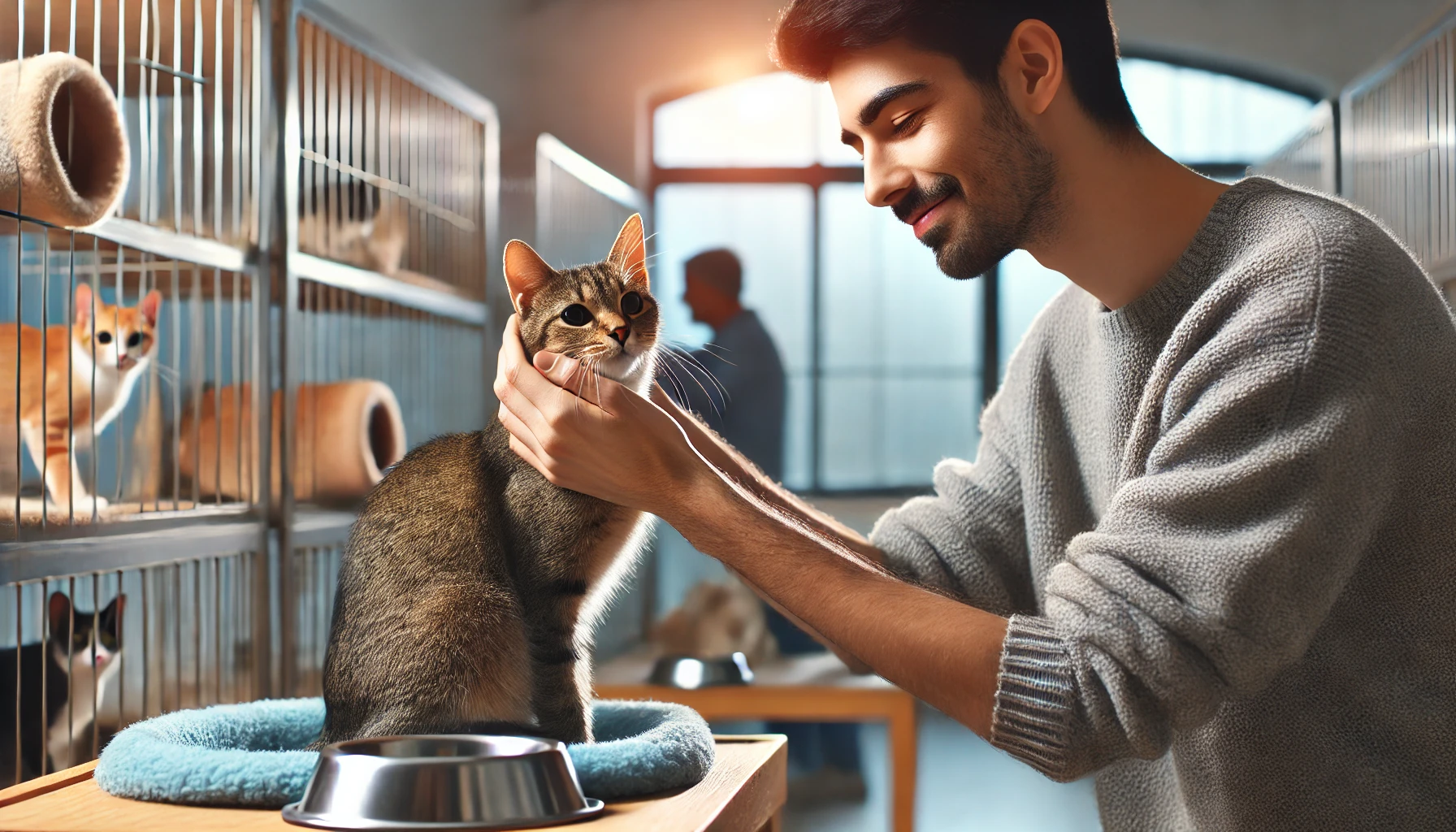
Why Adopt a Cat?
Choosing to adopt a cat means giving a homeless animal a second chance at life.
Many adoptable cats in shelters are there due to circumstances beyond their control, such as previous owners moving or facing financial difficulties.
By adopting, you’re providing a stable and loving environment for a cat that truly needs it.

The Impact of Adoption on Animal Shelters
Animal shelters often operate at full capacity, struggling to care for the influx of animals.
When you adopt, you not only save the life of the cat you bring home but also free up space and resources for the shelter to assist other animals in need.
This act of kindness has a ripple effect, benefiting the broader animal community.
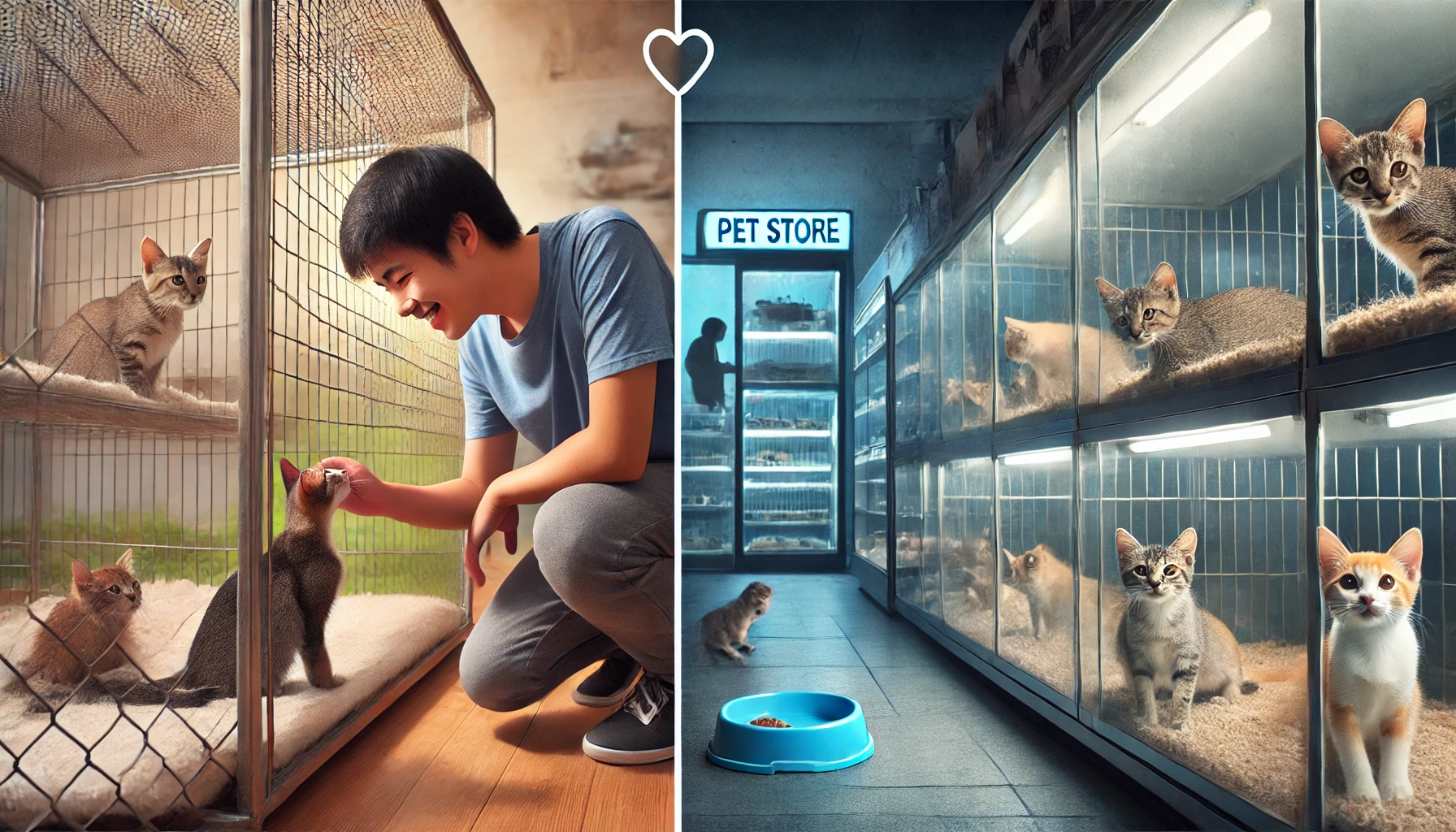
Adoption vs. Purchasing: Key Differences
While purchasing a cat from a breeder or pet store is an option, adoption offers distinct advantages:
- Cost-Effective: Adoption fees are generally lower and often include vaccinations, spaying/neutering, and microchipping.
- Health Assurance: Shelters typically conduct health checks and provide medical care, ensuring the cat is healthy and ready for a new home.
- Supporting Ethical Practices: Adopting helps combat the demand for commercial breeding, which can sometimes involve unethical practices.
By understanding these benefits, you’re better prepared to make an informed decision about bringing a new feline companion into your life.
Adopting a cat not only brings happiness to your life but also offers a home to a cat in need. Many cats in shelters deserve a second chance due to no fault of their own.
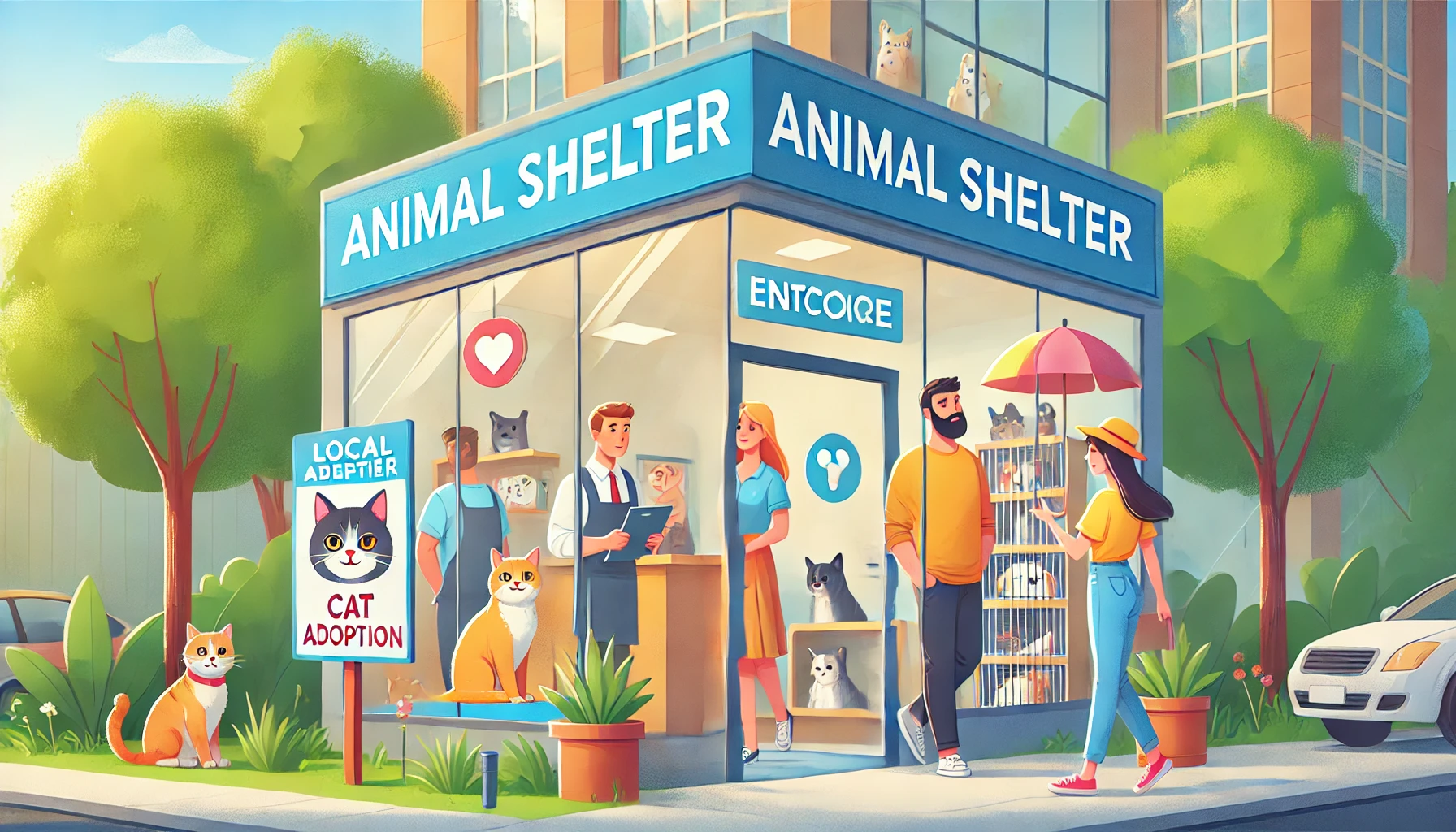
Exploring Local Animal Shelters and Rescue Organizations
Embarking on the journey to find adoptable cats in your area begins with exploring local animal shelters and rescue organizations.
These establishments are dedicated to connecting cats in need with loving homes.
Here’s how you can navigate this process effectively:

Identifying Nearby Shelters and Rescues
Start by researching animal shelters and rescue groups in your vicinity.
Utilize online platforms that aggregate information about local shelters:
- Petfinder: A comprehensive database of animals available for adoption across various shelters and rescues. You can search by location to find adoptable cats near you.
- ASPCA’s Find a Shelter: This tool helps you locate shelters and rescue organizations in your area, providing contact information and details about available pets.
Additionally, consider reaching out to your local animal control agency or veterinary clinics, as they often have information about nearby shelters and rescue groups.

Visiting Shelters: What to Expect
Once you’ve identified potential shelters, plan visits to meet the cats and understand the adoption process.
During your visit:
- Observe the Environment: Ensure the facility is clean, well-maintained, and that the animals appear healthy and well-cared for.
- Interact with the Cats: Spend time with different cats to gauge their temperaments and see which ones you connect with.
- Learn About Adoption Procedures: Each shelter may have its own adoption process, including applications, fees, and waiting periods. Familiarize yourself with these requirements.
Remember, the goal is to find a cat that fits well with your lifestyle and household.

Questions to Ask Shelter Staff
Engaging with shelter staff can provide valuable insights into a cat’s history and needs.
Consider asking the following questions:
- Background Information: What is the cat’s history? Was it a stray, surrendered, or rescued from a specific situation?
- Health Status: Has the cat been vaccinated, spayed/neutered, or treated for any medical conditions?
- Behavioral Traits: How does the cat interact with people, other cats, or pets? Are there any known behavioral issues?
- Special Needs: Does the cat require any special care, diet, or accommodations?
Gathering this information will help you make an informed decision and ensure a smooth transition for both you and your new feline friend.
Begin your search for adoptable cats by looking into nearby shelters. These organizations connect many cats with loving families every year.

Using Online Networks to Locate Adoptable Cats
In this information age, online sites have proved to be important channels for finding adoptable cats in your neighborhood.
These websites and apps bridge the gap between potential adopters and shelters or rescue organizations, making it easier and faster to find a feline companion than ever before.
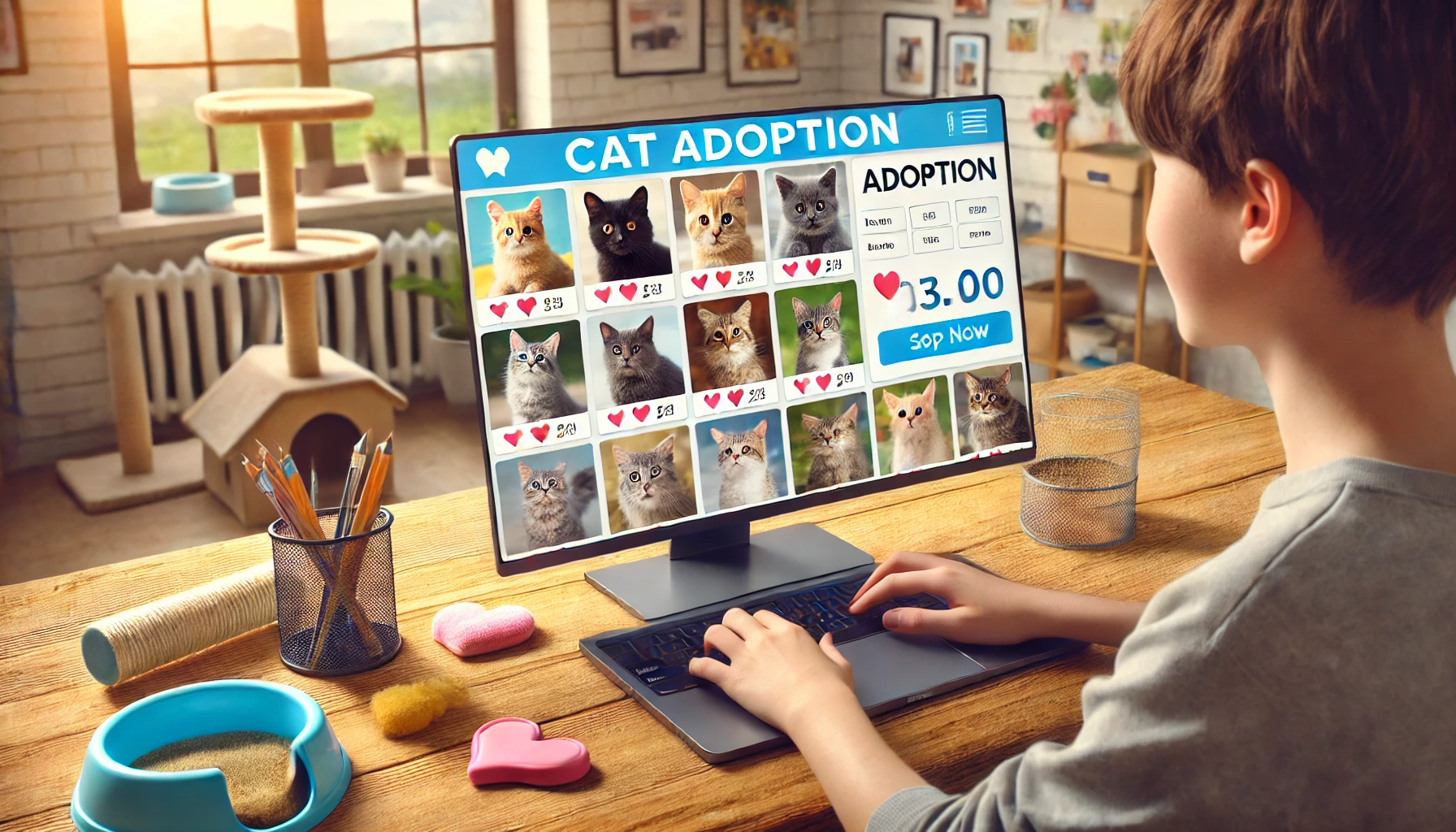
Best Websites That Have Cat Adoption Listings
There are several reputable websites specializing in animal adoptions, with extensive databases of cats waiting for adoption.
Here are a few popular options:
- Petfinder: As one of the largest online pet adoption platforms, Petfinder lists over 315,000 adoptable pets from nearly 14,000 animal shelters and rescue groups across North America. You can search by location, breed, age, and more to find adoptable cats near you.
- Adopt-a-Pet.com: This website allows you to search for adoptable cats by breed, age, size, and color. It also provides resources on pet care and adoption processes.
- ASPCA Adoptable Cats: The American Society for the Prevention of Cruelty to Animals has a database of cats available for adoption through their network of shelters and rescue groups.
These websites generally include pictures, descriptions, and information about temperament and health status to help you make an informed decision.

Setting Search Filters for Your Ideal Cat
To make your search for the ideal feline companion easier and faster, consider using these filters:
- Location: Enter your city or zip code to find cats available for adoption nearby.
- Breed: Filter by breed if you have a specific type in mind. Remember, mixed-breed cats can also make wonderful pets.
- Age: Decide if you’re looking for a kitten, adult, or senior cat, then adjust your filters accordingly.
- Gender: Some sites allow you to specify the gender of the cat you’re seeking.
- Behavioral Traits: Look for filters related to temperament, such as ‘good with children’ or ‘affectionate,’ to find a cat that fits well with your household.
By setting these parameters, you can narrow down your options to find a cat that aligns with your lifestyle and preferences.
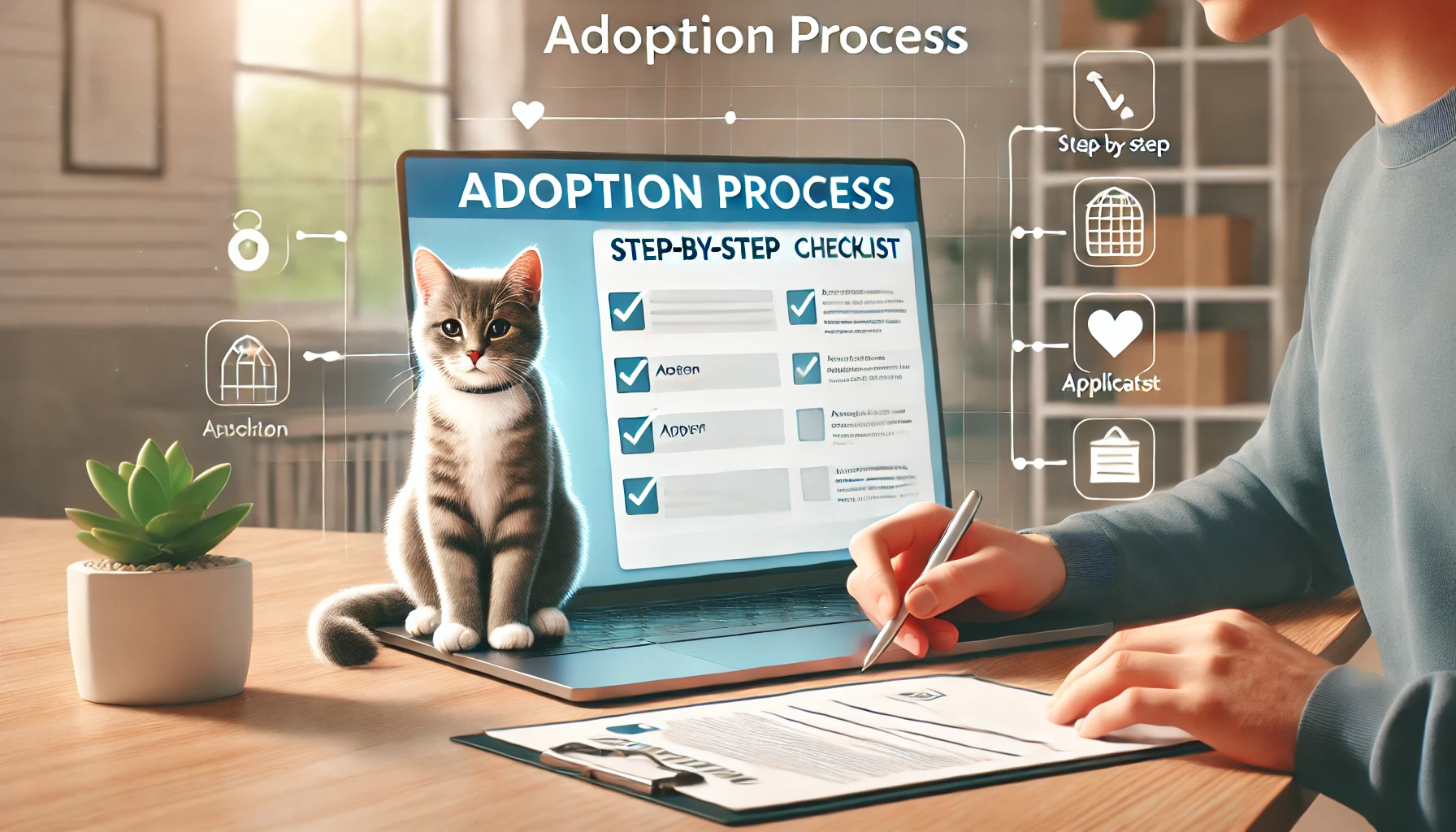
How Online Adoption Processes Work
Once you’ve identified a cat of interest from an online platform, it’s essential to understand what comes next in the adoption process:
- Application Submission: Many shelters require an application form to be completed, which may be available on their website or provided at the shelter itself.
- Interview or Home Visit: Some organizations conduct interviews or home visits to ensure a suitable match between the cat and adopter.
- Adoption Fees: Be prepared to pay an adoption fee, which often covers the cost of vaccinations, spaying/neutering, and microchipping.
- Waiting Period: Some shelters may have a waiting period before you can take your new cat home, allowing time for final health checks and preparations.
Understanding these steps can help make the adoption process smoother, providing a solid foundation for a successful transition for both you and your new feline friend.

Preparing Your Home for a New Cat
Bringing a new feline friend into your home is an exciting experience.
To ensure a smooth transition for both you and your new cat, it’s essential to prepare your living space adequately.
This preparation involves gathering necessary supplies, creating a safe environment, and planning introductions with other pets.

Essential Supplies for Your New Feline Friend
Before your cat arrives, make sure you have the following items ready:
- Food and Water Bowls: Opt for stainless steel or ceramic bowls, as they are easy to clean and less likely to harbor bacteria.
- Cat Food: Start with the same food your cat is accustomed to, then gradually transition to your preferred brand if needed.
- Litter Box and Litter: Provide a clean litter box with the same type of litter your cat is used to, placing it in a quiet, accessible location.
- Scratching Posts: Cats need to scratch to maintain their claws and mark territory. Provide sturdy scratching posts or pads to deter them from using furniture.
- Cat Bed: Offer a comfortable bed in a quiet area where your cat can retreat and feel secure.
- Toys: Interactive toys, such as feather wands and balls, help keep your cat mentally stimulated and physically active.
- Carrier: A secure carrier is essential for trips to the vet or other outings.
Having these supplies ready will help your cat feel more at home and reduce stress during the transition.

Creating a Safe and Comfortable Environment
To make your home welcoming and safe for your new cat, consider the following:
- Designate a Quiet Space: Set up a specific room or area where your cat can acclimate to their new surroundings without feeling overwhelmed.
- Remove Hazards: Secure loose wires, remove toxic plants, and ensure that small objects that could be swallowed are out of reach.
- Provide Hiding Spots: Cats often seek out hiding places when they’re stressed. Cardboard boxes or covered beds can offer them a sense of security.
- Maintain a Consistent Routine: Establish regular feeding and playtimes to help your cat adjust to their new environment.
By creating a safe and comfortable space, you help your cat build confidence and trust in their new home.

Introducing Your Cat to Other Pets
If you have other pets, introducing a new cat requires careful planning:
- Gradual Introduction: Keep the new cat separated initially, allowing them to become familiar with the scents and sounds of other pets through a closed door.
- Supervised Meetings: After a few days, allow brief, supervised interactions, gradually increasing the time as they become more comfortable.
- Positive Reinforcement: Reward all pets with treats and praise during and after interactions to encourage positive associations.
- Monitor Behavior: Watch for signs of stress or aggression, and be prepared to separate the animals if necessary, giving them more time to adjust.
Patience and careful management are key to fostering harmonious relationships between your new cat and existing pets.
By thoroughly preparing your home and planning introductions thoughtfully, you set the stage for a happy and healthy life together with your new feline companion.
Preparing your home with necessary supplies and a safe space for your new cat helps them adjust smoothly, making their transition easier and stress-free.
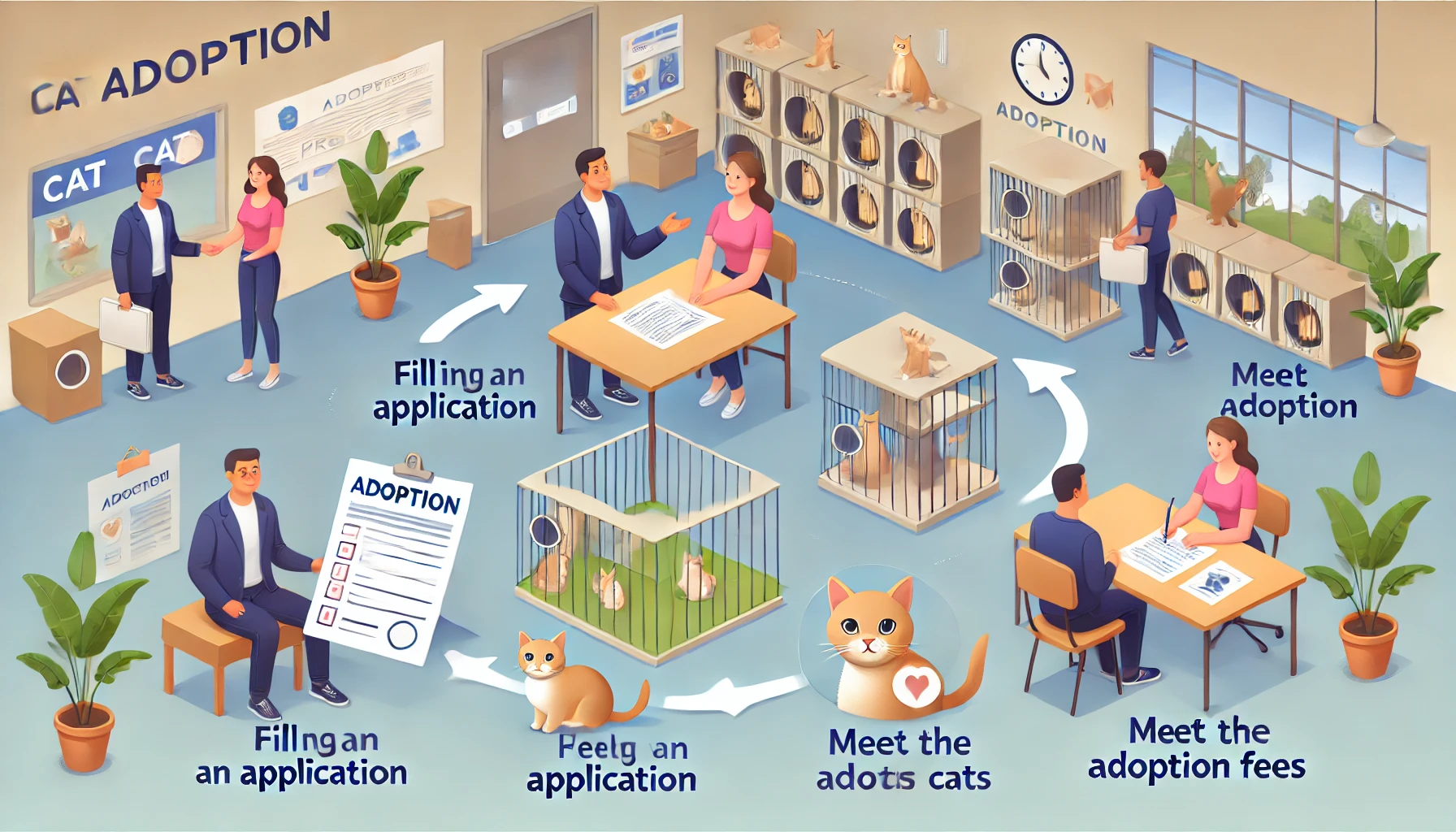
Understanding the Cat Adoption Process
Embarking on the journey to adopt a cat is both exciting and rewarding.
To ensure a smooth experience, it’s essential to understand the typical steps involved in the cat adoption process.
Being well-informed will help you navigate each stage with confidence and clarity.
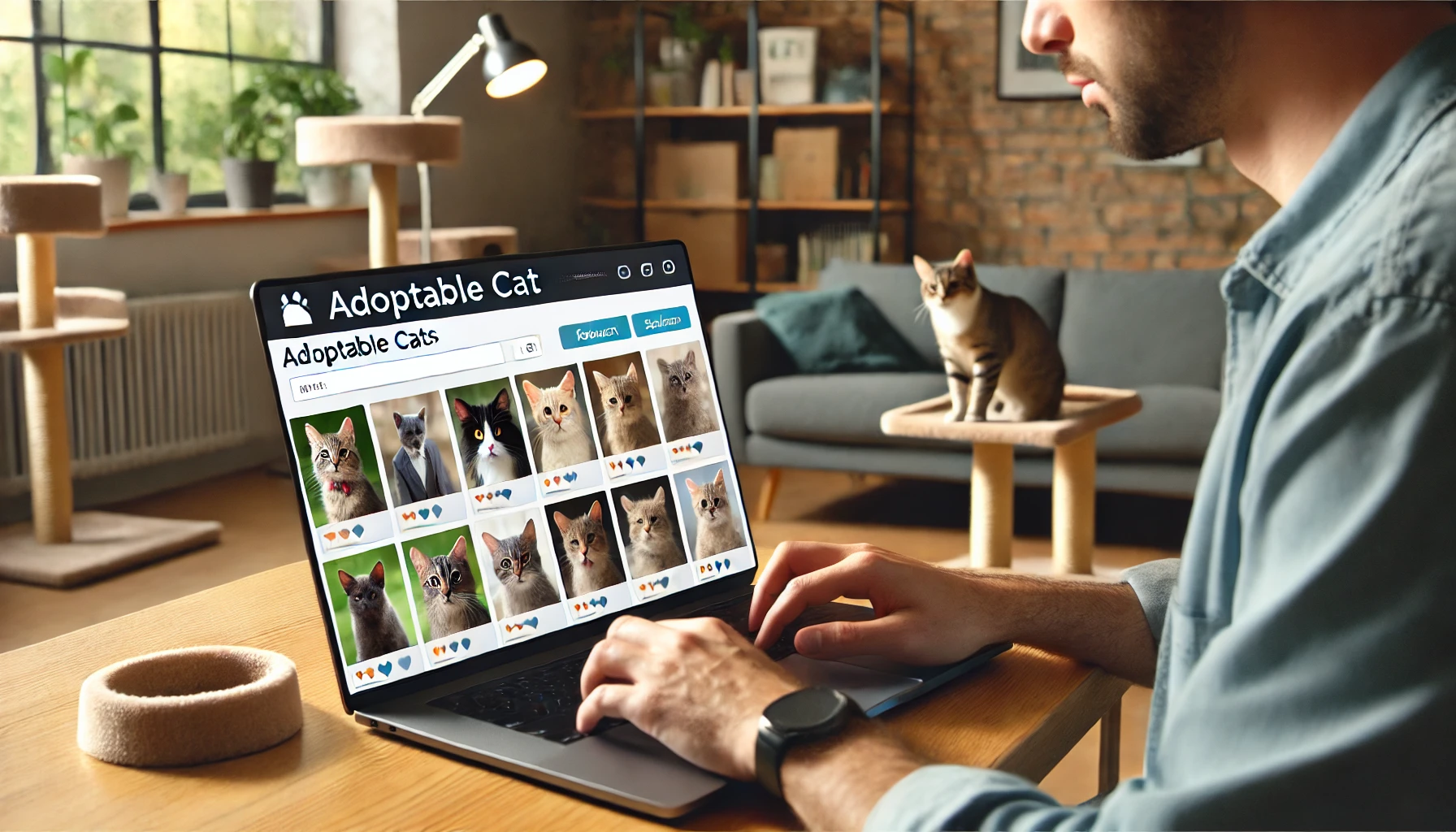
Research and Selection
Begin by exploring local shelters, rescue organizations, and online platforms to find adoptable cats that match your preferences.
Consider factors such as age, temperament, and any special needs.
Visiting shelters in person allows you to interact with cats and assess their personalities firsthand.

Application Submission
Once you’ve identified a cat you’re interested in, you’ll need to complete an adoption application.
This form typically includes questions about your living situation, experience with pets, and how you plan to care for the cat.
The goal is to ensure a good match between the cat and your household.

Interview and Home Visit
Some organizations may conduct an interview or home visit to further assess suitability.
This step helps confirm that your home environment is safe and appropriate for the cat.
It’s also an opportunity to ask any questions you might have about the cat’s care and behavior.
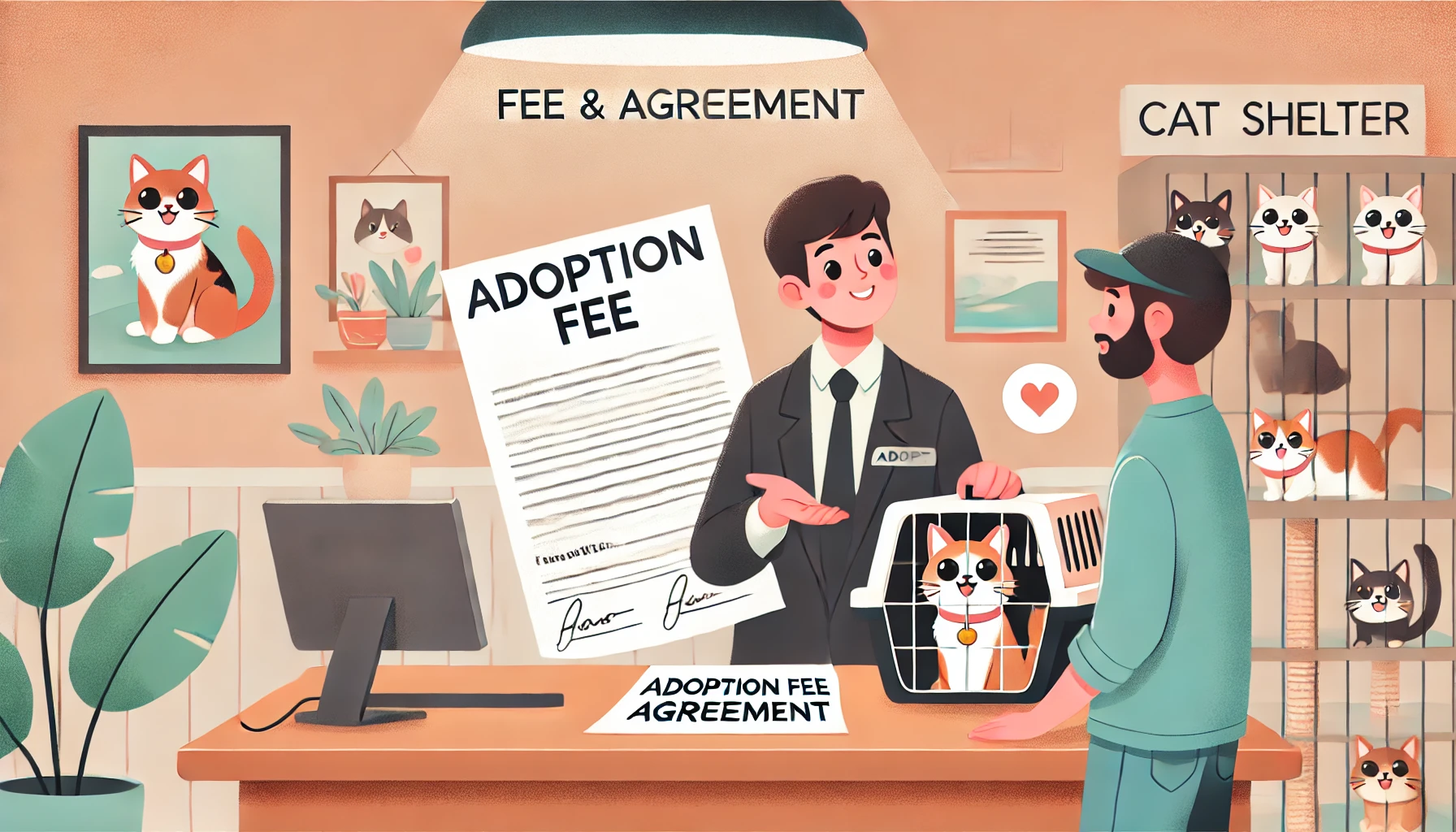
Adoption Fee and Agreement
Adoption fees vary but generally cover essential services such as vaccinations, spaying/neutering, and microchipping.
You’ll also sign an adoption agreement outlining your responsibilities as a pet owner.
This contract ensures that both parties understand the commitment involved.

Bringing Your New Cat Home
After completing the necessary paperwork and paying the adoption fee, you can bring your new feline friend home.
It’s advisable to have all necessary supplies ready and to introduce your cat gradually to their new environment to minimize stress.
Understanding these steps will help you prepare for each phase of the adoption process, leading to a successful and fulfilling experience for both you and your new cat.
The adoption process may vary by shelter but typically includes application forms, interviews, and sometimes home visits to ensure a suitable match.

Final Thoughts on Finding and Adopting Cats in Your Area
Adopting a cat is a decision that brings joy, companionship, and a rewarding sense of giving back to the community.
By choosing adoption, you’re offering a second chance to an animal in need and gaining a loyal, loving friend in the process.
This guide has covered each step, from understanding the benefits of adoption to preparing your home and navigating the adoption process.

Why Adopting Cats Makes a Difference
Finding adoptable cats through local shelters, rescue organizations, and online platforms allows you to support ethical practices and ease the burden on shelters.
Whether you’re looking to help reduce overcrowding in shelters or simply want a loyal companion, adoption offers a meaningful way to make a difference in an animal’s life.
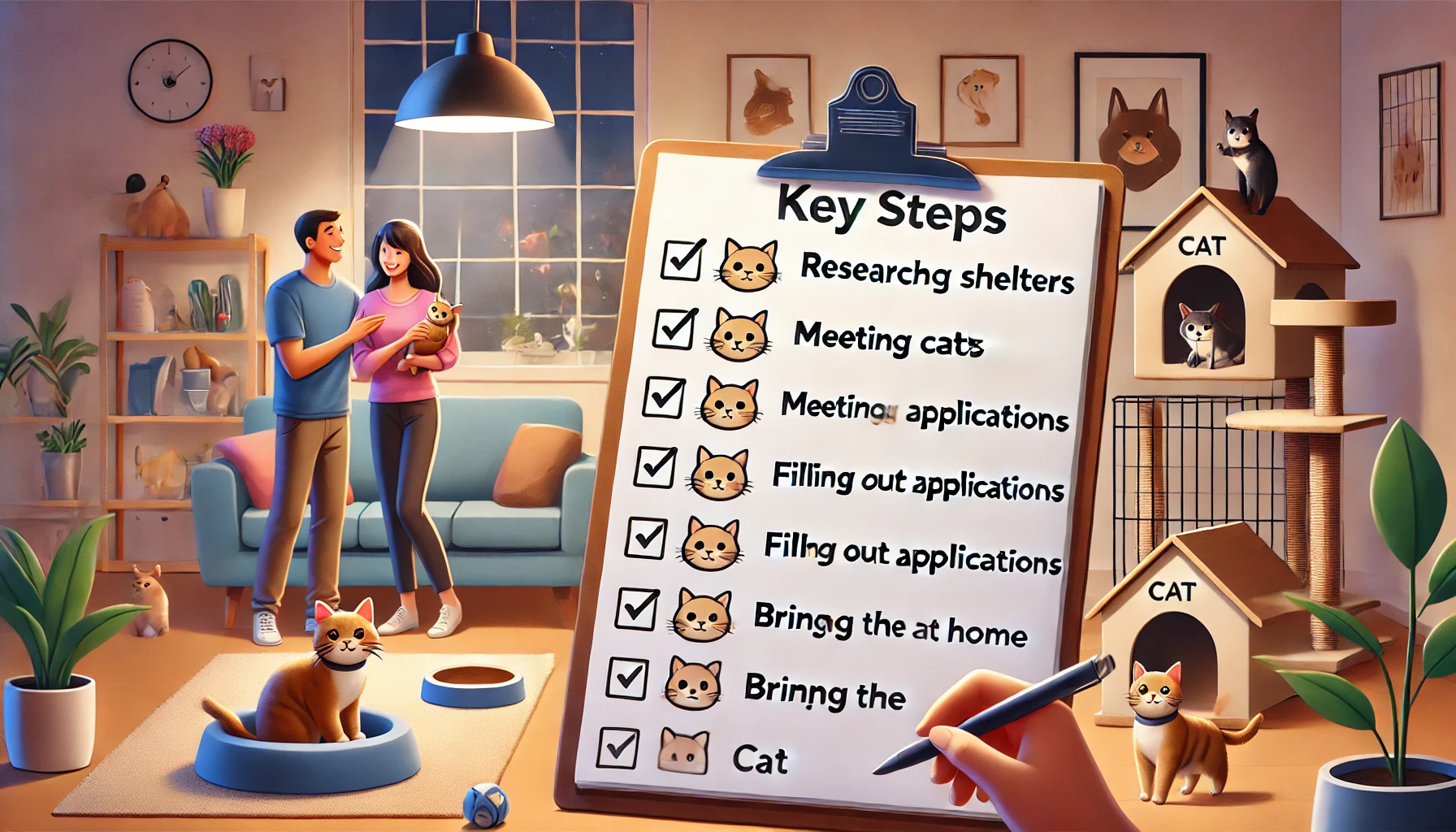
Key Steps to Successful Adoption
By following these key steps, you’ll be well-prepared to bring a cat into your life:
- Explore local shelters and online networks to find cats in need of a home.
- Prepare your living space with all the necessary supplies and a safe environment.
- Consider the needs and personalities of potential adoptees to ensure a good match.
- Complete the adoption process, including applications, interviews, and any fees.
Taking these steps carefully helps both you and your new feline friend settle in and form a strong, trusting bond.

Building a Lasting Relationship with Your New Feline Friend
After bringing your new cat home, remember that patience, understanding, and routine are vital.
Provide ample time for your cat to adjust to their new surroundings, introduce them gradually to family members and other pets, and establish a consistent daily routine.
Over time, your efforts will lead to a strong bond, creating a fulfilling and joyful relationship for years to come.
By understanding and embracing each part of the adoption process, from finding adoptable cats to nurturing a new bond, you’ll enjoy a smoother journey and a more rewarding experience.
Adopting a cat is truly a life-changing choice, for both you and the cat, as you build a lifetime of companionship together.
Choosing to adopt a cat supports ethical practices and reduces the burden on shelters, while providing a rewarding companionship for you and a home for a cat in need.
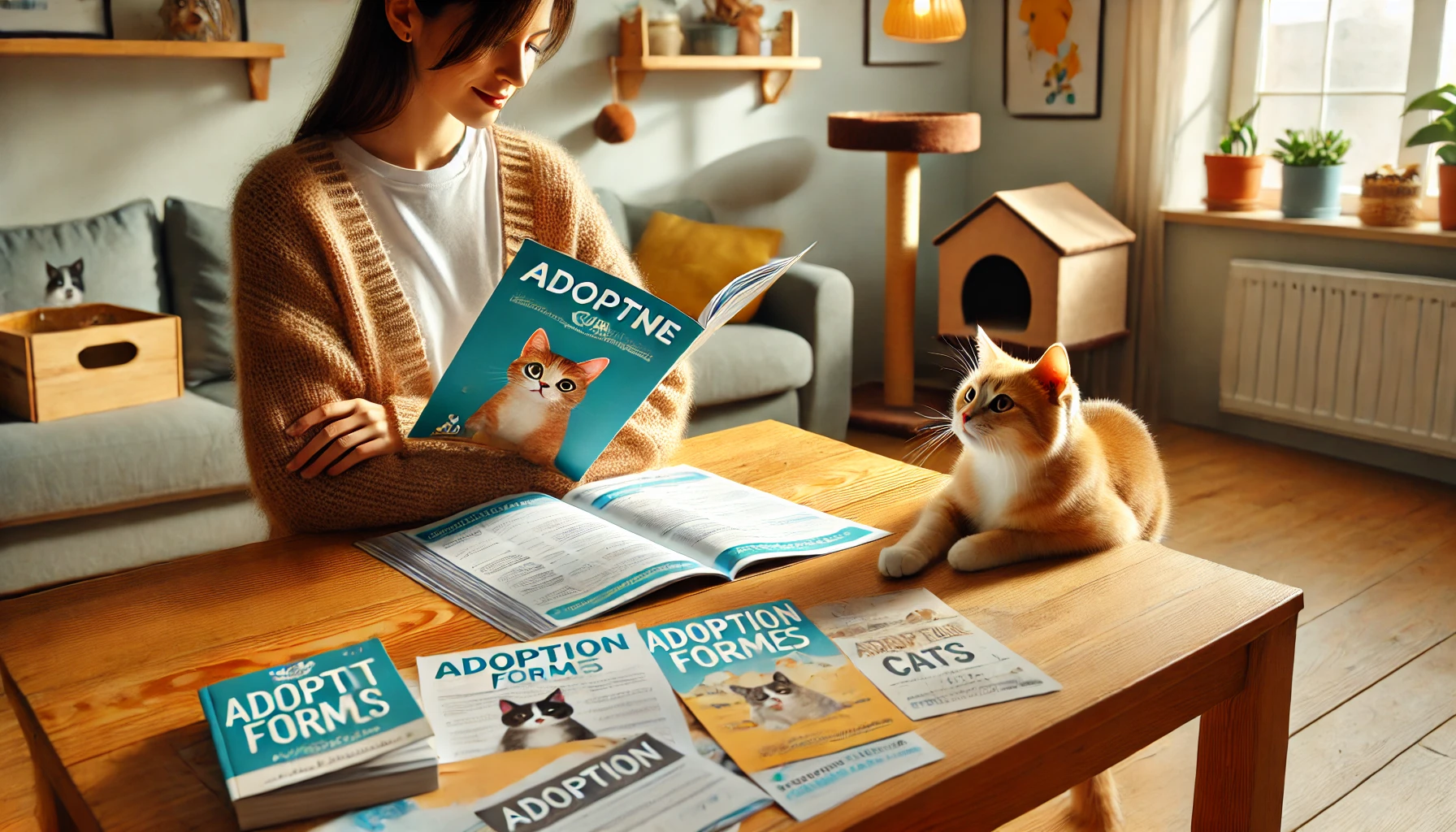
Frequently Asked Questions About Finding Adoptable Cats
Embarking on the journey to adopt a cat often brings up several questions.
Below are some common inquiries to assist you in the process.
Where can I find adoptable cats near me?
Local animal shelters, rescue organizations, and online platforms like Petfinder and Adopt-a-Pet list adoptable cats in your area.
What should I consider before adopting a cat?
Assess your lifestyle, home environment, and readiness for a long-term commitment to ensure a suitable match with the cat’s needs.
How much does it cost to adopt a cat?
Adoption fees vary but typically range from $50 to $150, covering vaccinations, spaying/neutering, and microchipping.
What supplies do I need before bringing a cat home?
Essential items include food and water bowls, litter box, scratching posts, toys, bedding, and a carrier for transportation.
How do I introduce a new cat to my existing pets?
Introduce them gradually, starting with scent swapping, followed by supervised meetings, to ensure a smooth transition.
Are there specific requirements for adopting a cat?
Requirements vary by organization but may include an application, interview, home visit, and agreement to care standards.
Can I adopt a cat if I have young children?
Yes, many adoptable cats are suitable for families with children; choose one with a compatible temperament and supervise interactions.
What is the typical process for adopting a cat?
The process usually involves selecting a cat, submitting an application, meeting the cat, and completing an adoption agreement.
How can I ensure my home is safe for a new cat?
Remove hazards like toxic plants, secure loose wires, and provide a quiet space for the cat to acclimate.





